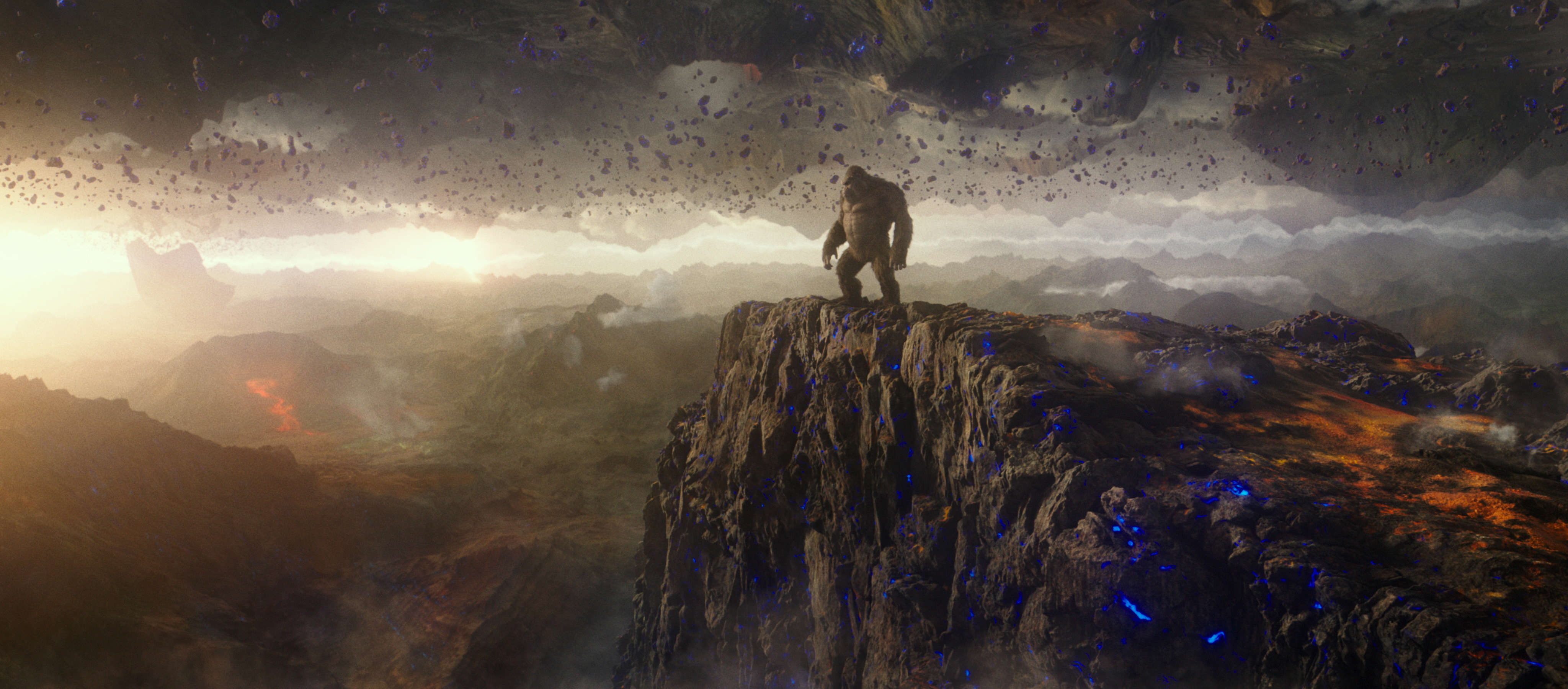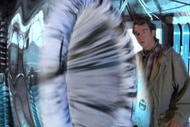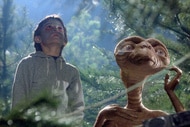Godzilla vs. Kong's 'hollow Earth' where giant monsters live is bogus, right? The science behind the fiction

Science can lead us, with each iteration, nearer to the truth. But that doesn't mean that some of its greatest practitioners weren't sometimes way off the mark. Albert Einstein, despite rewriting physics, was wrong about more than a few things. Isaac Newton believed in alchemy and devoted a significant portion of his life to creating a Philosopher's Stone (the making gold kind, not the Harry Potter kind). Edmond Halley, most famous for his discovery that a periodically appearing celestial object was in fact an orbiting comet, believed with his whole heart that the Earth was hollow. He also believed life thrived within the hidden underground spaces of our planet.
That belief persisted in some circles for hundreds of years, spawning various scientific hypotheses and fictional stories. Jules Verne's Journey to the Center of the Earth is perhaps the most well-known subterranean fiction story, but the list is vast and still growing. Most recently, Godzilla vs. Kong, the latest installment in Legendary's mega Monsterverse, shows viewers a glimpse of a vast underground world where Titans roam.
Obviously, Godzilla vs. Kong isn't the most scientifically sound movie ever made. (If you know what the "square-cube law" is, do your best to forget while watching two giant monsters throw down.) But, is there anything to this "hollow Earth" idea? And, if so, could giant Titans roam around down there?
HOLLOW EARTH?
It's laughable today, or it would be if there weren't people who still believed in things like a flat Earth and moon landing conspiracies, but for a while, the hollow Earth hypothesis was a seriously considered scientific idea. The theory likely got its start in popular tradition; many cultural mythologies include stories of a world beneath the world. Later, misinterpretations of scientific data temporarily lent creditability to substantial subterranean space beneath the crust.
Halley's belief in a hollow Earth was a way of explaining the world's variable magnetic field. Noting the shift in the magnetic North and South Poles over time, Halley supposed an explanation involving multiple fields all running over one another, each of them related to one of several concentric hollow spheres making up the Earth. As further evidence, Halley took the Earth's density relative to the Moon, as provided by none other than Isaac Newton.
In Newton's Principia, he provided figures for Earth and the Moon's density at a 9 to 5 ratio, indicating the Moon was nearly twice as dense as the Earth. Using that as a basis, Halley supposed this could be explained if four-ninths of the Earth were empty.
Voilà: hollow Earth.
Of course, those density figures were wrong, and the shifting magnetic poles are due to the roiling of Earth's molten outer core. Halley's conclusions were based on evidence, but it was evidence inaccurately calculated and incorrectly interpreted. So it goes. Halley's ideas were empty. The Earth isn't.
BUT... WHAT IF?
Supposing such a subterranean world did exist, the question then becomes whether or not it could support life. Moreover, could it support thriving, genetically diverse populations of various Titans?
The first hurdle to jump is one of space. This one's pretty easy. There's more than enough real estate beneath the surface to allow for creatures, even giant ones, to roam around. The surface of the Earth boasts approximately 196 million square miles. Of that, there is about 57 million square miles of land.
If we imagine a subterranean world as a second sphere inside the Earth, it becomes necessarily smaller but not dramatically. For comparison, we can use the size of the other rocky planets and review their surface area.
Venus is nearly identical in size to Earth, astronomically speaking. Its mean radius is 3760.4 miles compared to 3958.8 for Earth. Were we to slide Venus inside of an entirely hollow Earth, it would fit with nearly 200 miles to spare.
Even accounting for a 25-mile-thick outer crust, there'd be plenty of room for an atmosphere and a Venusian surface beneath. The surface area of Venus is 178 million square miles, or about 90 percent that of Earth. Even assuming a similar distribution of water and land, there would be space aplenty for the Titans to roam.
Territory wouldn't be an issue underground, but pressure and temperature would. Standing at sea level, atmospheric pressure pushes down on you at 14.7 pounds per square inch, on average. This pressure is a direct result of the column of air above you. Descending into the Earth means a taller column of air pressing down on the body and increased air pressure.
For reference, the air pressure at the peak of Everest (29,032 feet above sea level) is 4.36 pounds per square inch, about a third of that at sea level. The variance is large enough that the average climber requires supplemental oxygen to make the summit.
Heading deep underground creates the opposite problem. With each inch we descend, the column of air pressing down on your body increases. At just 1 mile below sea level, the air pressure increases to 17.55 pounds per square inch. At 10 miles beneath the surface, the pressure would be nearly 20 times that of surface level. At 200 miles beneath the surface, the depth of our fictional subterranean world, the pressure would be literally crushing. And that's not even taking temperature into account.
The deepest hole in the world is the Kola Superdeep Borehole in Russia. Work on the hole continued intermittently from 1970 until 1994. Today, it's covered over with a metal cap bolted to the earth, but beneath that cap is a hole 9 inches in diameter and more than 12 kilometers deep. The original goal was to dig to a depth of 15 kilometers, but the project was abandoned when high temperatures made it untenable. At that depth, the equipment was met with temperatures of more than 350 degrees Fahrenheit. The drillers said the rock behaved like plastic at those temperatures and described it as trying to maintain a pit in the center of a pot of soup.
Maybe someday we'll find an opening in the Earth, leading to a vast expanse of untapped real estate, but it wouldn't be a very desirable place to live.




























